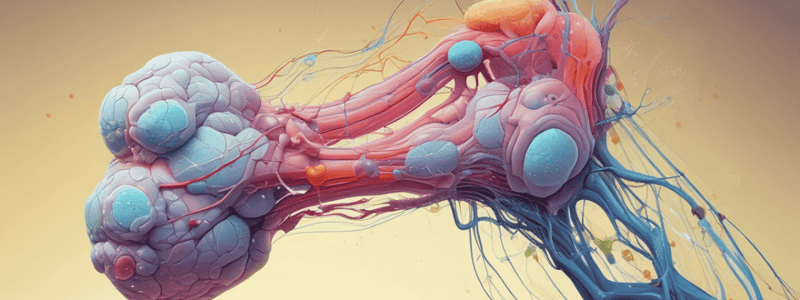Podcast
Questions and Answers
How is the osmolarity and Na+ concentration monitored during dehydration?
How is the osmolarity and Na+ concentration monitored during dehydration?
Osmoreceptors in the hypothalamus monitor the osmolarity of blood plasma and Na+ concentration.
How is the osmolarity and Na+ concentration monitored during overhydration?
How is the osmolarity and Na+ concentration monitored during overhydration?
During overhydration, osmolarity decreases and blood pressure also decreases, resulting in less ADH production from the Posterior Pituitary Gland. This leads to little to no water reabsorption from the collecting ducts in the kidneys, causing osmolarity to increase.
Flashcards are hidden until you start studying
Study Notes
Osmolarity and Sodium Concentration Monitoring
- Osmoreceptors in the hypothalamus monitor blood plasma osmolarity and sodium concentration.
Dehydration
- During dehydration, blood plasma osmolarity increases and blood pressure decreases.
- Osmoreceptors stimulate the production of Antidiuretic Hormone (ADH) from the Posterior Pituitary Gland.
- Increased ADH production leads to increased reabsorption of water from urine into blood in the collecting ducts of the kidney.
- This process decreases blood plasma osmolarity, resulting in hydration.
Overhydration
- During overhydration, blood plasma osmolarity decreases, and blood pressure also decreases.
- Decreased osmolarity leads to less ADH production from the Posterior Pituitary Gland.
- Reduced ADH production results in little to no water reabsorption from the collecting ducts in the kidneys.
- This process increases blood plasma osmolarity, correcting the overhydration.
Studying That Suits You
Use AI to generate personalized quizzes and flashcards to suit your learning preferences.
